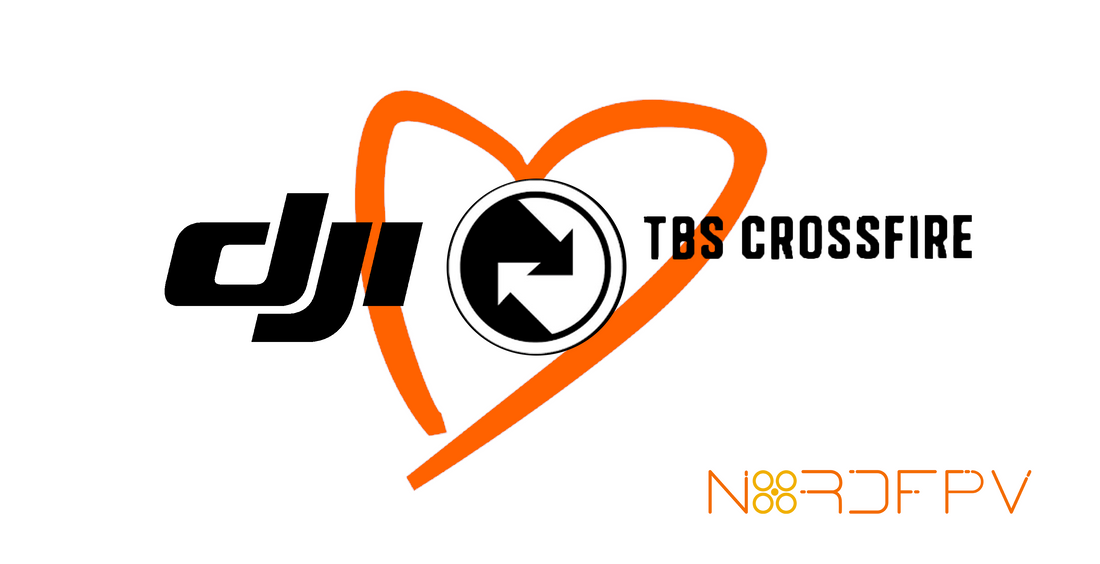
The best setup - The golden way
Share
When you are just starting to fly you just want to go out and be able to spend some minutes in the air without crashing, or maybe being able to land without doing some artistic, but undesired, rolls. But once you start getting better, once you have a bit more control of what you are doing with your drone you immediately start thinking about how can I do it better? How can I go further?, how can I faster?.
An answer to many of those questions is stick time. Just flying will give you more control, that will make you feel more confident in your skills to get your drone in new tighter spaces, but there are some other components that make life a bit easier as well.
As I have said in previous blog entries I started flying a Tinyhaw Freestyle. Nice machine, but the version 1 of the model had a pretty crappy analog camera, and in all honesty, there’s a lot of details you miss, which means that my newbie state in conjunction with the lack of visibility made my doubt about which gaps I was going to try to go through or how far I was from that branch.
Also, something I noticed quite quickly with the same drone was that I would suddenly fall from the sky without a reason, only to discover that the integrated FrSky compatible receiver on those whoops has quite a limited range.
And here starts another interesting trip in this drone world, where I wanted to get the best image possible, have enough range to not drop from the sky, and get some inspiration to go to new places, and try to go through some new gaps, or behind some trees in my next flight.
In order to get more range I moved from the integrated receiver to an external one, but I used another FrSky receiver. It gave me more range, but at that time I didn't know about what has become kind of a standard in this world, which is Crossfire.
Crossfire is an amazing technology, which gives you an incredible range and very quick response. In order to use crossfire, you normally need an external module (unless you are running a crossfire control like the Tango 2), and a receiver very similar in size as the smallest ones in the market. But this protocol will allow you to outrange your video transmitter, which essentially means you can fly wherever you want as long as you can see in your goggles some image. The fact that your control link is stable everywhere you have a video feed means you can basically forget about it, and just worry about where you can reach with your image.
Long range translates also into penetration, so going behind some trees, or even walls, is not a big problem for crossfire.
There are other similars long range protocols, and especially now, both TBS and ImmersionRC have announced new protocols that seems to be as good as crossfire (even better in certain conditions like racing) like Tracer and Ghost, but those two are quite new, and crossfire is still at the top of the list with a huge amount of information out there, a very mature technology, and a big community behind it to support it.
When it comes to the second issue mentioned at the beginning, how to get better visibility, well, these days it’s easy to answer that by saying: going digital, and specifically DJI.
When you have a pair of digital goggles on you, you see details you may have missed in analog, which gives you the confidence to fly closer to certain objects, or faster through some areas, or try gaps you couldn’t distinguish well before.
This combination of crossfire on the control link, and DJI on the video link creates for me what I would like to call the golden standard for FPV. Yes you can have many other combinations, specially if you are racing you may not find this particular combination any good, or you could argue that you may not need all the range that crossfire gives you, but even then you could use some peace of mind having crossfire and just simply forget about failsafing almost at any point.
It could be that tracer or ghost can be an option, some are saying that if you don’t have crossfire yet you may want to give a chance to any of these two new protocols, but I’ll challenge that by reminding people that the amount of information together with the maturity of crossfire is a very compelling selling point, specially if you don’t own any of these protocol you could infer that the end user may be quite new, and as a newcomer he/she may need quite some help to get up and running, configuring and using any of these protocols.
With video there’s not much to say. Fatshark got into digital recently, and despite it’s better than analog, when it comes to video quality, I can’t put them in the same league, DJI is just better, and by the way, DJI video has an amazing range as well.
What do you say, do you have this combination? Or are you curious about it? We at NordFPV have all the pieces, feel free to look around and ask all that you want!
